Rauchkofel – Pussterthal
From the Hungarian perspective, the defense of Carinthia and Tyrol is a distant and difficult topic. Many smaller local units operated on this front, provincial riflemen and Tyrolean rifle battalions. Their assignments developed during the war and changed frequently. The border mountains of Carinthia were secured by the newly formed 49th “Pussterthal” Division. In the spring of 1916, the 96th Brigade and the 56th Mountain Brigade were assigned to this. The latter included two battalions of the 36th Landwehr Infantry Regiment, as well as the 162nd and 171st Landsturm Battalions. I have included all of this in advance because, according to a contemporary press report, they played a major role in the minor battle that is the subject of this entry were these units.
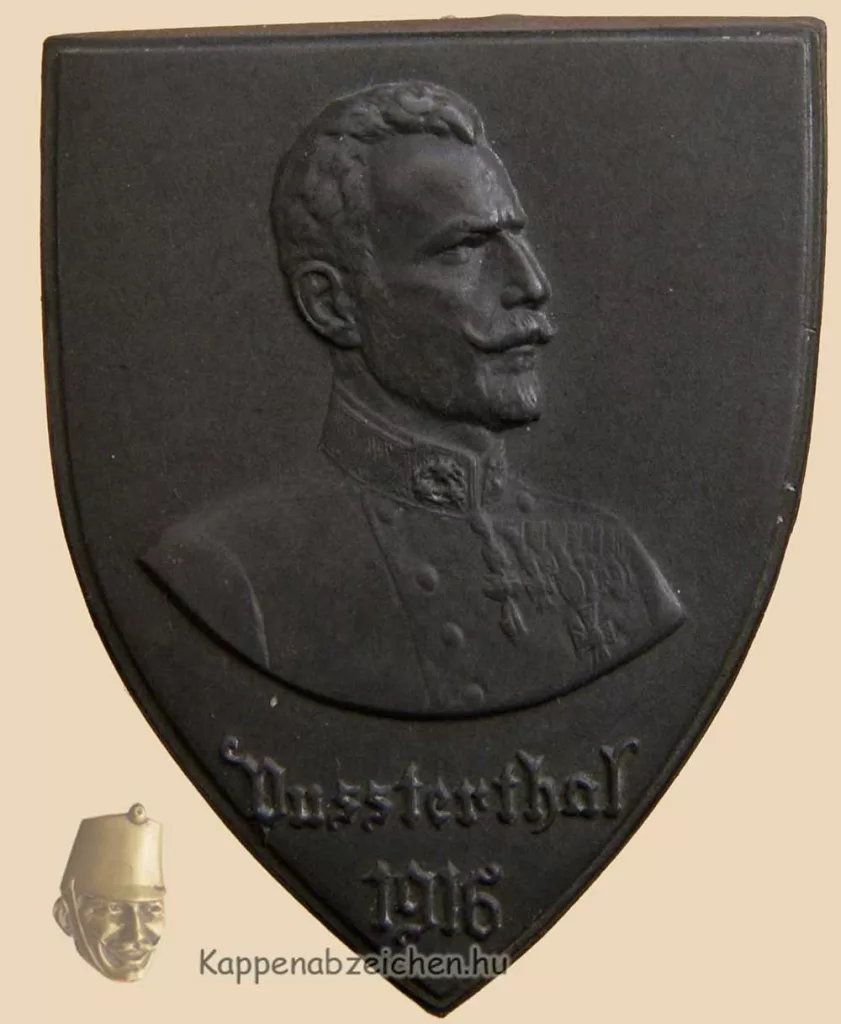
What was the point here? The border region of Carinthia and Tyrol had been continuously attacked by the Italians since May 1915. In the rush after the attack, the Monarchy’s military command deployed here the troops that were currently available, regardless of their suitability for mountain warfare. For example, the 20th Honvéd Infantry Division suffered enormous losses in May and June 1915 in the area around the Plöcken Pass, in the terrain between the Kleiner Pal and Grosser Pal mountains. The Honvéds were soon replaced by the hastily raised mountain troops of the 49th Division, including the battalions just mentioned.
The Rauchkofel mountain peak rises in the Dolomites, north of Mt Cristallo. The Italians occupied it in a raid a year later, in the spring of 1916. The Italian 208th Regiment attacked the Austro-Hungarian defenders there by surprise by climbing the steep cliff face. They overwhelmed the defenses and dug in under the peak. They were able to hold the occupied positions for a week against Austro-Hungarian counterattacks. The artillery fire caused significant casualties, and it was not easy to secure supplies from the steep side. On April 7, the Austro-Hungarian counterattack forced the Italians out of their positions on the mountain. The peak was returned to Austrian hands. The 121 surviving Italian soldiers were taken prisoner.
Dozens of such attacks and counterattacks characterized the High Mountain War. I have wondered a lot in retrospect what was the point of this? I can’t imagine what the purpose of capturing a mountain peak at great losses could be, when behind it there is the next one, and then the next? It is obvious, of course, that these clashes were small skirmishes compared to the operations on the Karst, where a single day of battle often claimed many thousands of victims. I can only think that the Italians attacked mainly in those directions where they had territorial claims. They wanted to capture these areas. Not Carinthia. Therefore, they just demonstrated on this front section.
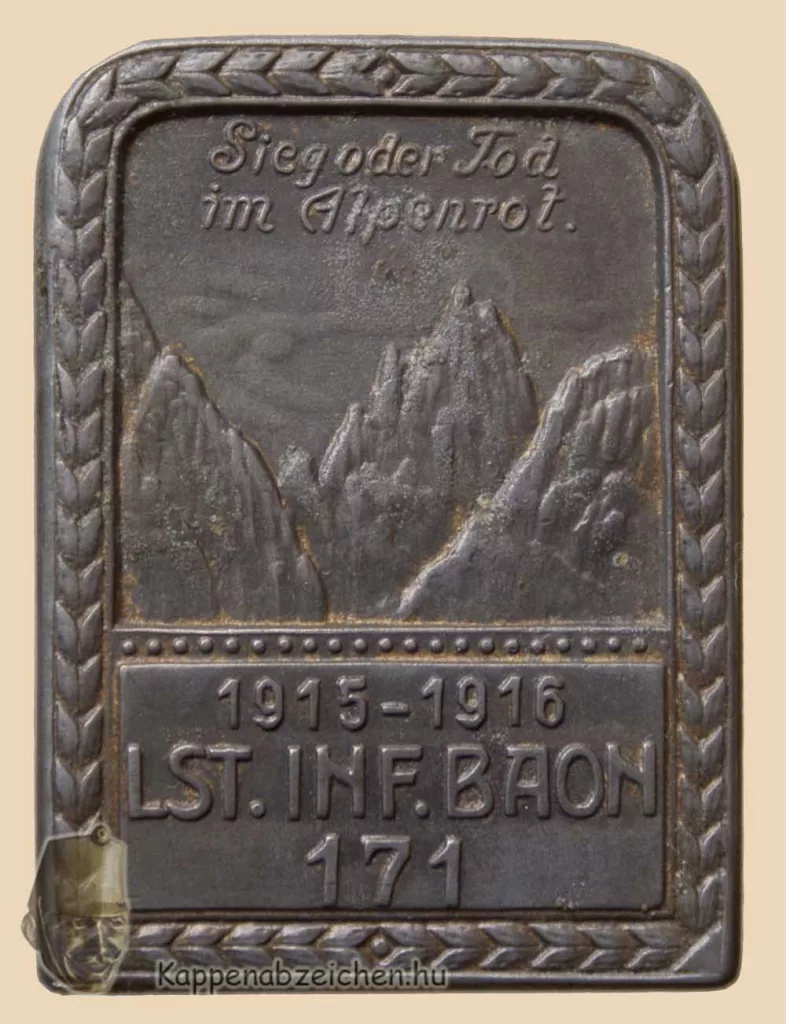
The mentioning of this battle was justified by the photo of the opening scene. In this one, an Austrian buck in mountain gear is posing, according to the caption, after the capture of Rauchkofel. In addition to the divisional badge decorated with the portrait of Archduke Eugene, the badge of the 171st Landsturm Battalion, which may have participated in this enterprise, the counterattack, is also desirable here. The soldier in the photo may have belonged to this battalion.

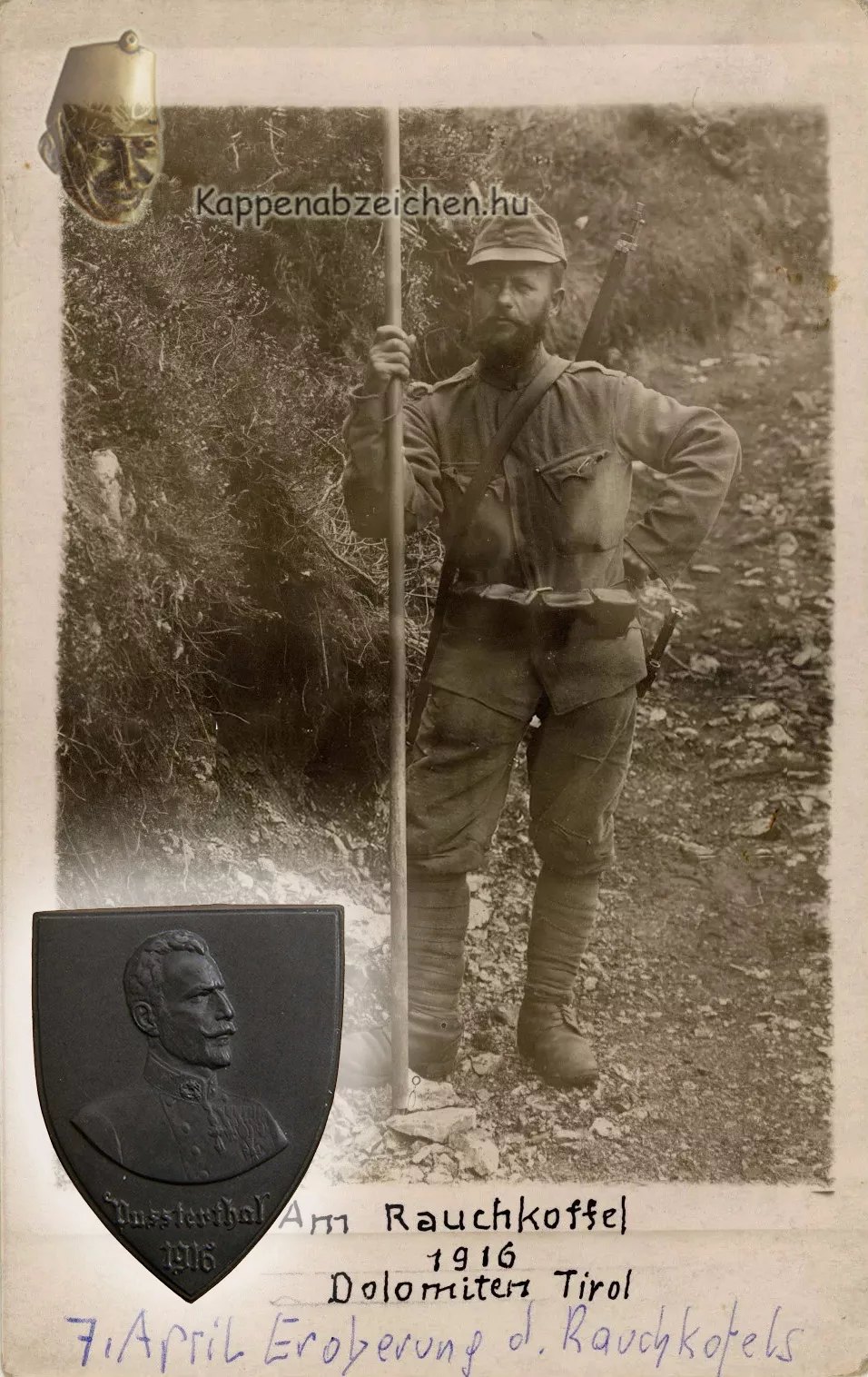
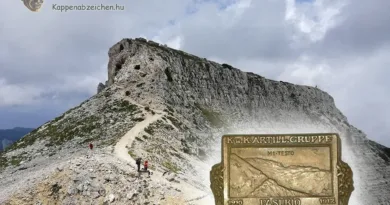
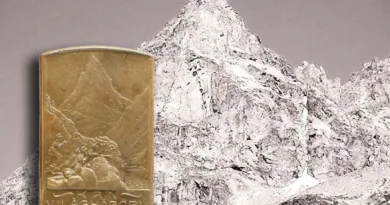

Hello, the attack on Rauchkofel on March 31, 1916 was carried out by Italian 23rd Infantry Regiment (Brigata Como, at first by 17th Company led by Captain Aldo Bosio from Venice), not by 208th Inf. Regt.(this was Brigata Taro, it was established on April 6, 1916 near Verona). Until April 7, on Rauchkofel, there were other companies from 23rd Inf. Regt., Alpini from Battalion Val Piave, in the last day there were units from 54th Inf. Regt. (Brigata Umbria), led by Captains Fantino Ferdinando and Mattirolo Leone, both taken prisoners.
Thank you Enrico! The sources are sometimes wrong even with the identification of own units!
[…] units from the area. I have already written about one episode of the defensive battle they fought here. In addition to the divisional badge, I have attached the badge of the 171st Landsturm to this […]